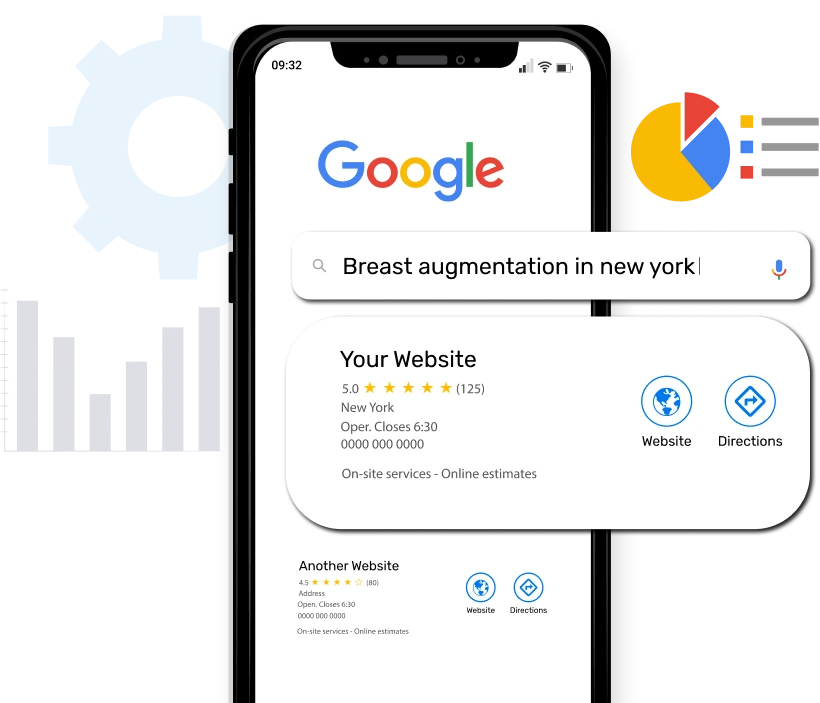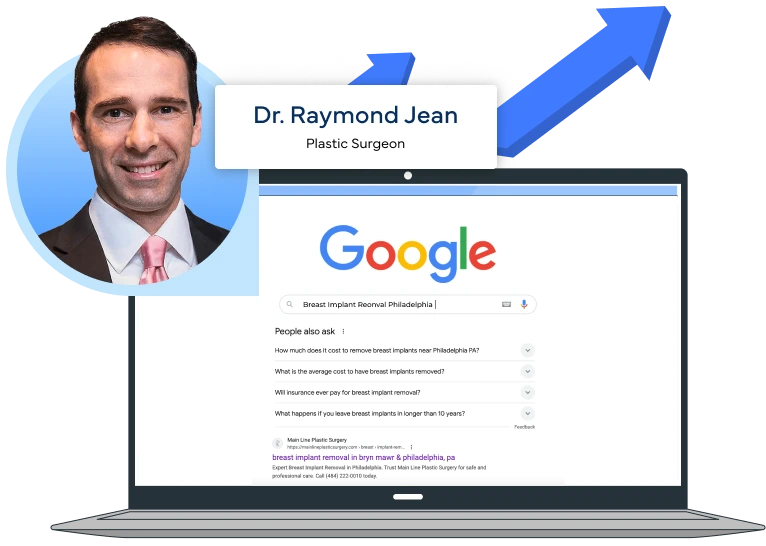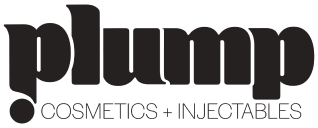Healthcare SEO
Why Isn’t Your Practice Ranking on Google?
Most SEO agencies create endless blogs that don’t drive results. At Pilot Practice, we focus on optimizing your service pages to rank for high-value, local keywords.
Our SEO strategy is built to grow your patient base—not just your web traffic.

What We can Do
We Help You Rank For Key Services
Keyword Strategy
Target high-value terms patients are searching for.
Local SEO
Dominate the area and attract nearby patients.
Technical SEO
Optimize your site for faster loading and better performance.
Link Building
Build authority with quality backlinks
On-Page SEO
Ensuring every page works hard to rank.
Content Writing
We Create compelling content that converts.
Patients can’t book what they can’t find.
Let us help them find you.

Case Study: Client triples their website traffic in just 6 months
- Breast Implant Removal in Philadelphia | Rank #1
- Gynecomastia in Philadelphia | Rank #1
- Breast Augmentation in Philadelphia | Rank #3
- Liposuction in Philadelphia | Rank #2
- Plastic Surgeon in Philadelphia | Rank #3
These are the searches your potential patients are actively making—not generic blog topics lacking real search intent.
Trusted by Leading Practices in The Industry






Ready to Get Found by Local Patients?
Your Practice Deserves to Be #1—Let’s Make It Happen.
Why Choose Us
Seamless Software Integration
As Part Of Our Comprehensive Solutions
Our software solutions work hand-in-hand with our services & your practice to deliver results and enhance efficiency.
Comprehensive Practice Management
Our software streamlines every aspect of your practice, including lead management, appointment scheduling, and patient communications, all through our HIPAA-Compliant CRM.
Custom-Tailored for Health Professionals
Specifically designed for the health and wellness industry, our software meets your practice’s unique needs and adheres to industry standards, providing robust and reliable functionality.
Data-Driven Growth
Our software provides actionable insights through real-time analytics, enabling you to track performance, optimize workflows, and achieve measurable growth for your practice.









